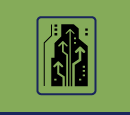

|
|
||
|
Current Lack of Diversity and Opportunity
The members of groups under-represented in STEM
careers, including women, African Americans,
Latinos, Native Americans, and persons with
disabilities, face multiple and reinforcing
obstacles if they choose to pursue these
professions. Though many of these individuals have
the greatest educational needs, they tend to be the
least well served by the K-12 educational system.
Quantitative capability is a significant “digital
divide” for many U.S. students, noted one workshop
participant. Except for non-Hispanic White women,
students from under-represented groups are more
likely than other students to emerge from
pre-college education without the mathematical and
scientific background needed to achieve later
educational and career success in these fields. More
broadly, a lack of social capital and status can be
critical factors for pre-college students. For
example, many people now in STEM careers had access
to professionals who were in similar fields and
could offer advice and support, but fewer minorities
have such resources. Similarly, majority students
often can draw on family connections or other points
of contact in their pursuit of high quality
preparation for work in STEM fields; this is not the
case for many underrepresented minority students
(NSF, 2004b). More obstacles can be encountered
during the undergraduate, graduate, and postgraduate
years, leading to gradually declining percentages of
underrepresented minorities at the higher levels of
academia in science and engineering. For example,
though the representation of women in some fields
has increased, in other fields they remain severely
under represented ((National Science Foundation,
2004b,c; National Science Board, 2004). Research
into the causes for this reveals that there are many
complex and inter-related factors that contribute to
this under-representation. They begin with early
socialization of young women away from an interest
in STEM, self-selection out of math and science
courses in college, and multiple barriers
encountered in graduate school and in the workforce
that inhibit their desire to participate in
STEM-related careers (Byer, Rynes and Haller,
2004;Weinburger, 2004). |
